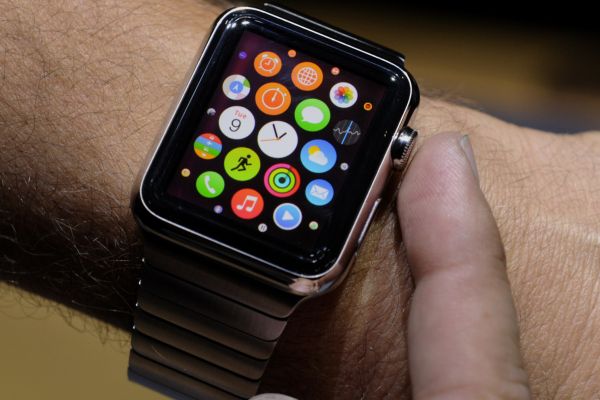Published on the 21/04/2015 | Written by Beverley Head

Ross Mason ordered an Apple Watch last week – but first he asked his wife…
She had bought him a Rolex as a wedding present, was it now OK to replace that with a smartwatch? He got the green light and ordered a silver strapped Apple Watch last week.
Mason, a founder and vice president of product strategy for API specialist software company MuleSoft, expects that smartwatches and other wearables are going to quickly stop being a novelty item and migrate into the enterprise space over the next two years as their value becomes more apparent. He says organisations need to start planning for this extreme mobility.
Initially he expects applications to be pushed by software vendors – especially SaaS vendors such as Salesforce, ServiceNow and Workday – but that eventually enterprises will develop their own mobile apps that integrate wearables with enterprise software and data.
“This really adds value – for example for a field worker who needs to have both hands free. They can get live information or give feedback,” without having to hold a smartphone or ruggedised tablet, said Mason.
“There’s a little less friction than a phone or a tablet in your hand,” he said.
According to analyst Telsyte 370,000 smartwatches were sold to Australians in 2014 – and it has forecast that by 2018 the local market will be worth more than $400 million. It believes the arrival of the Apple Watch which goes on sale in Australia as part of the global launch this Friday, will lead to a 50 percent jump in sales this year alone.
The launch date for New Zealand customers has yet to be announced, but it’s not stopping businesses such as Air New Zealand crafting apps specifically for the Apple watch. In Australia Commonwealth Bank has also announced a watch app.
Mason believes that there will also be opportunities to engage with consumers using wearables – using Beacon networks for example to push out retail offers to consumers. “It’s a low friction way of reaching the user,” he said.
But Mason said that the new form factor would require a different level of innovation, and clarity from app designers who only have a tiny screen to work with.
He said that although traditionally corporate adoption of technology trailed consumer adoptions by three or four years, he believed it would only take two years for smartwatches to start being deployed by corporates.
“The watch application will be an extension of the mobile or web application – you need to leverage your mobile infrastructure.”
Mason said it was important enterprises ensure they review their mobile strategy and consider how to unlock the value of enterprise applications and data by making it accessible to employees using wearables, with particular focus on how having instant access to data could streamline organisational workflows.
“Consumers are always ahead of the enterprise when it comes to the tools they like to use for productivity. While this week’s launch of the Apple Watch won’t immediately impact the enterprise, it will drive IT teams to start setting up security and privacy policies and cloud app providers will be the first to offer up extensions to their applications and enable capabilities on the smart watch.
“For instance, smart notifications are a major benefit the Apple Watch can introduce to the enterprise to allow for quick responses with a simple tap or gesture. More and more, we’ll see users take advantage of these ‘moments’ and developers strive to delight users with better user experience and more streamlined workflows within the applications and between other devices,” he said.



























